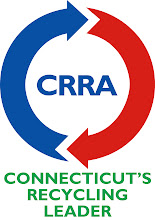On Monday, The Times published a story headlined "Europe Finds Clean Energy in Trash, but U.S. Lags" that described the use of trash-to-energy in Denmark.
According to the story:
Their use has not only reduced the country’s energy costs and reliance on oil and gas, but also benefited the environment, diminishing the use of landfills and cutting carbon dioxide emissions. The plants run so cleanly that many times more dioxin is now released from home fireplaces and backyard barbecues than from incineration.
The story cites a study done by EPA and North Carolina State University that determined trash-to-energy is much more environmentally-responsible than landfilling.
On Tuesday, The Times's online edition kicked off a discussion entitled "Should the U.S. Burn or Bury Its Trash?"
The discussion ventured into the ideas of zero-waste and massive recycling systems as practiced in Japan and some European nations. These are both worthy ideals, but most Americans want convenience -- even if it costs a little more -- and these systems aren't convenient enough.
Connecticut's solid waste hierarchy, as established in Sec. 22a-228b of the Connecticut General Statutes, has led to Connecticut's recycling about 25 percent of its solid waste. There's certainly room for improvement with some reasonable steps -- more processing infrastructure to cut down on transportation costs, help for communities that want to switch to single-stream recycling and automated collection but can't afford the capital investment, more enforcement of the state's recycling laws and regulations -- but even with all these steps, until we get to zero-waste we're still going to have garbage to get rid of. Trash-to-energy really is the best option.
